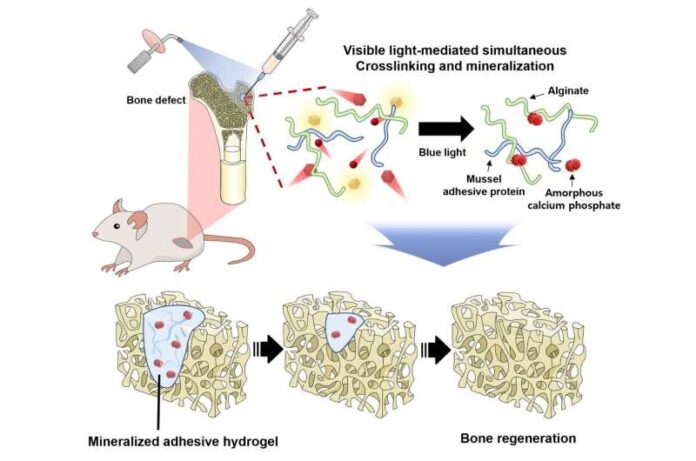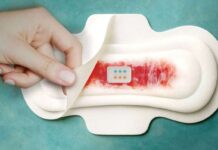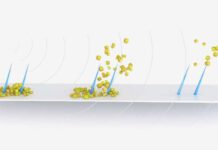A study team created a novel injectable adhesive hydrogel for bone regeneration. This hydrogel uses safe visible light to achieve both cross-linking and mineralization without the requirement for bone grafts. The findings were recently published in the journal Biomaterials.
Bone deformities can result from a variety of causes including trauma, and infection. And congenital anomalies are becoming more common in aging cultures. Bone grafts mixed with serum or bioadhesives are frequently used in traditional procedures to fill defects.
However, existing injectable hydrogels face problems such as trouble keeping shape within the body and low adhesive strength. Furthermore, established procedures involving bone transplants and adhesive materials frequently fail to achieve both “bone regeneration” and “adhesion.”
The POSTECH team developed an innovative approach to address these restrictions. This new hydrogel technology uses visible light—which is safe for the human body. To encourage cross-linking, where the primary components of the hydrogel bond and harden. And to simultaneously boost mineralization, where bone-building minerals like calcium and phosphate form within the hydrogel.
The newly discovered hydrogel precursor contains alginate (a natural polymer generated from brown algae), RGD peptide-containing mussel adhesive protein, calcium ions, phosphonodiols, and a photoinitiator. The coacervate-based formulation, which is insoluble in water, guarantees. That the hydrogel maintains its shape and location following injection into the body.
When exposed to visible light, cross-linking occurs, and amorphous calcium phosphate, which serves as a bone graft material, is created at the same time. This eliminates the need for separate bone transplants and adhesives, allowing the hydrogel to perform both bone regeneration and attachment.
Professor Hyung Joon Cha from POSTECH commented,
“The injectable hydrogel system for bone regeneration developed by our research team represents an innovative alternative to conventional complex treatments for bone diseases and will greatly advance bone tissue regeneration technology.”




